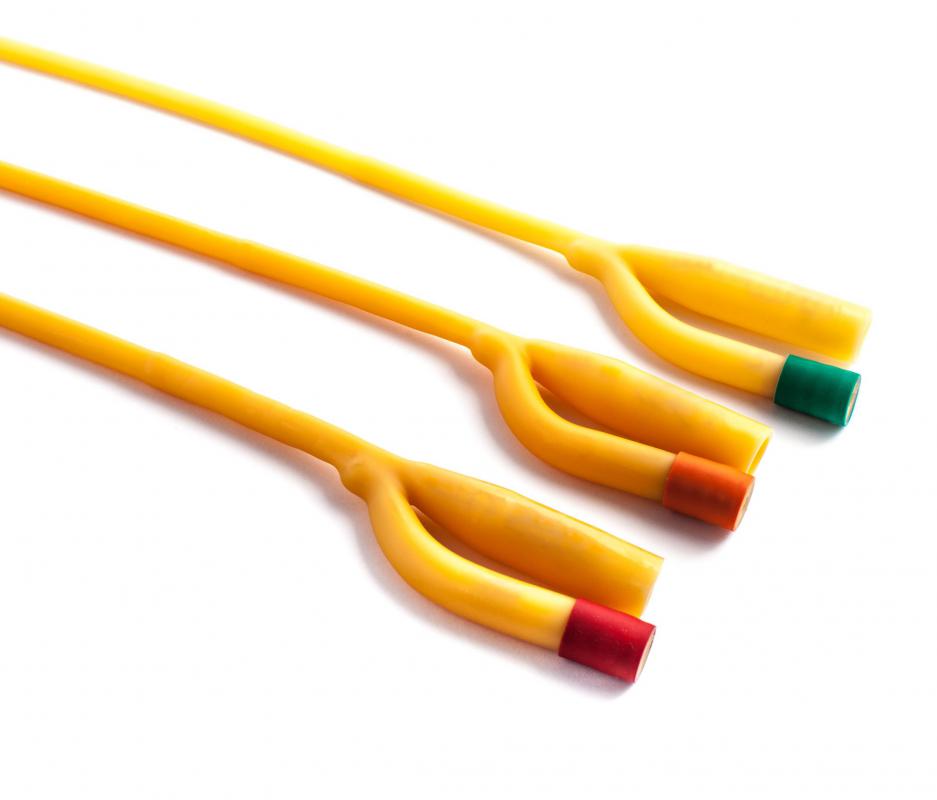At TheHealthBoard, we're committed to delivering accurate, trustworthy information. Our expert-authored content is rigorously fact-checked and sourced from credible authorities. Discover how we uphold the highest standards in providing you with reliable knowledge.
What are the Different Types of Bladder Surgery?
Bladder surgery is a treatment option for patients suffering from bladder cancer or incontinence. Tumors can put pressure on the urethra and prevent urine flow. It helps remove cancerous tissue and restore bladder function in cancer patients. Incontinence can be caused by many reasons. Stress on the abdomen from bending over, coughing, or laughing can cause involuntary urine discharge. Women are 2:1 more prone than men to stress incontinence. Treatment options include estrogen therapy, exercises that strengthen the pubic region and retrain the bladder, or incontinence products like absorbent clothing or protective covering. Men can experience incontinence due to enlarged prostate or bladder stones. Whatever the cause, surgery should be reserved as the last resort.
Incontinence
There are four major options for bladder surgery: retropubic suspension, urethral sling procedure, bladder stone removal, and artificial urinary sphincter.

Retropubic suspension is used to treat women with incontinence by lifting the sagging bladder and urethra. These structures have dropped abnormally low in the pelvic area and need to be returned to their normal position. An incision is made into the abdomen to access the bladder and lift it off the urethra. A catheter is placed into the bladder through the urethra to aid urine drainage; it is usually removed within 10 days. Patients can return home after 2-3 days of hospitalization, with 2-4 weeks of recovery period. Possible complications include urinary tract infections, constipation, urinary bleeding, and recurrence of incontinence. Patients should drink plenty of fluids and incorporate vegetables, fruits, and fiber into their diet.

The urethral sling procedure is another surgery option for women. A sling is placed around the urethra to return it to its natural position. The sling also adds pressure to prevent accidental urine leakage. It is attached to the abdominal wall and is made of either synthetic material or organic tissue. A plastic sling is compatible with the body and will be absorbed and disintegrate eventually. Patients undergoing the sling procedure share the same recovery period and similar complications as patients treated with retropubic suspension. In addition, obese patients have a higher risk of stitches pulling free. Also, a synthetic sling may irritate the urethra or vagina and cause sexual dysfunction.

Bladder stones can block the flow of urine and will need to be removed. This condition is more common in men. A telescopic tube called a cystoscope is inserted into the bladder. Bladder stones are crushed by ultrasonic waves, hammering, or electrohydraulic sparks and removed through the cystoscope. In cases of unusually large bladder stones or enlarged prostate, a procedure called suprapubic cystostomy is performed to create a connection from the bladder to the skin to bypass the urine blockage. A catheter is placed through the connection to drain the urine. The catheter needs to be replaced every 4-10 weeks. A bag outside the body collects the urine. Bleeding and infection are possible complications.

An artificial urinary sphincter restores normal urinary function to patients with weakened sphincter muscles. Involuntary urine leakage occurs when the sphincter is too weak to hold urine in the body. The artificial sphincter is composed of three parts: an inflatable cuff that applies pressure on the urethra to hold back urine, a balloon that controls the pressure applied by the cuff, and a control pump that inflates and deflates the cuff by regulating the flow of fluid between the cuff and balloon. An incision is made in the scrotum, labia, or lower belly to insert the device. The balloon sits under the belly muscles. The pump is placed either in the scrotum in men or underneath the skin of the lower belly or leg of women. Only patients suffering from severe incontinence are considered for the procedure. All patients must possess the hand strength to operate the pump and understand that 20% require future operations to address tissue atrophy, cuff maintenance, mechanical failure, and device infection. Patients risk bleeding and the deterioration of surrounding tissues due to constant mechanical manipulation of the device.
Bladder Cancer

Patients with bladder cancer can be treated with two main types of bladder surgeries: transurethral resection (TUR) and cystectomy. The type of surgery needed is decided by the stage of bladder cancer. The earlier it is detected, the simpler the treatment will be. Symptoms of bladder cancer include pain during urination, blood in the urine, lower back pain, urge but inability to urinate, and/or involuntary urination.

Transurethral resection is the less extreme type of bladder surgery. Cancer tissue is removed from the bladder. It is performed under general or local anesthesia and does not involve opening up the abdomen. A cystoscope is inserted into the bladder through the urethra or shaft of the penis. A wire loop is inserted through the tube and is used to remove cancerous cells from the bladder. TUR bladder surgery in combination with radiotherapy and chemotherapy can be used to treat early stage bladder cancer patients.

Patients who have undergone TUR may develop mild complications like urination difficulty or pain during the recovery period after surgery. After TUR, patients usually can return home immediately or may need to stay overnight. They recover normal urinary function within two weeks. In cases where cancer cells remain or relapse, the procedure can be repeated a number of times, but repeated attempts put patients at risk in damaging the bladder and its ability to hold urine.

Cystectomy is the more extreme surgical procedure and is preferred by some doctors over TUR for treating early stage bladder cancer. This type of bladder surgery requires a cut to be made into the abdomen, under general anesthesia. Either the entire or part of the bladder is removed, depending on the stage of cancer progression. Total or radical cystectomy refers to removal of the entire bladder. Partial cystectomy refers to partial removal of the bladder. Surrounding tissue and organs that the cancer cells have spread to may also need to be removed. In severe cases, the prostate will be removed from male patients and ovaries from female patients. Post-operative patients may suffer from frequent urination, urinary stones, infection, male impotence, low semen production, and menopause in women whose ovaries and uterus were removed during bladder surgery.
Total cystectomy is a life-changing procedure that may have profound psychological impact on the patient. If the bladder is removed, doctors will have to give patients a different way to store and remove urine. Bladder reconstruction is done at the same time as the cystectomy. In a procedure called urostomy, a part of the small intestine acts as an ileal conduit for passing urine from the kidneys to outside the body, emptying into a plastic bag attached to the abdomen. Another option is creating a new bladder from a segment of the small intestine. After cystectomy, patients will be hospitalized for 7 to 10 days and be able to return to normal activities in 4 to 6 weeks. Recovery is based on patients' age and general health. Quicker recovery is associated with younger, healthier patients.
AS FEATURED ON:
AS FEATURED ON:


















Discussion Comments
How long does the bladder takes to be normal after a TUR? Is it normal to have a red spot after the tumor is being removed? For how long?
My dad is 93, and has almost stopped walking. we lift him out of wheelchair on to bed and etc. His vital signs are good, oxygen count was 95 yesterday. He has had a pacemaker for about 20 years.
The prostate is very large, and we have have taken him to the ER two times in about two weeks, and there is scarring from a previous surgery, TURP, maybe 30 years ago.
The neck of his bladder is narrowing, and he has a Foley in now with a plug instead of a bag. His urologist wants to do a TURP on him, but I don't think he will let him.
His mind isn't the best, how long can he wear this catheter and be safe?
Is surgery always the best fix for bladder problems?
It seems like recently people tend to jump into surgery without considering other options, like medication or lifestyle change.
Just remember, surgery is an invasive, involved procedure -- not a miracle fix, like some people tend to see it.
@FirstViolin -- I think that your best choice for bladder incontinence surgery might be a urethral sling.
This is very commonly used in women, and is particularly attractive to some because there is a low risk of trouble voiding afterwards.
The newest type of urethral sling surgery is done with a "tension-free" sling, which is not attached to the abdominal wall, but instead is a mesh held in place by the body tissue that grows through it.
Of course, you should ask your doctor and see what he says, but I have heard good things about urethral slings -- just make sure that it is the best option for your mom before trying to push a surgeon to do it.
What would be considered a bladder control surgery?
My mom has had an overactive bladder for years, and we are now looking into surgery -- what would be the best type of bladder surgery for her?
Post your comments